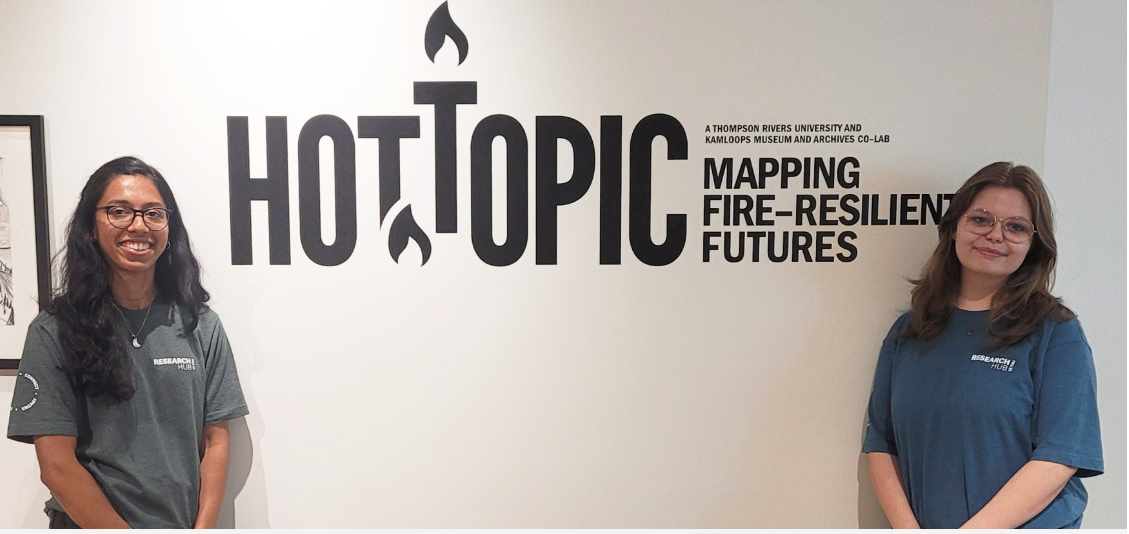
Thompson Rivers University researchers have teamed up with the Kamloops Museum and Archives to create a new interactive exhibit and research project that aims to learn more about community uptake of FireSmart principles.
Hot Topic: A Cultural Mapping of the FireSmart Program is being shown at the Kamloops Museum until Aug. 30.
Project co-lead and TRU interim dean of the faculty of student development Will Garrett-Petts said the aim is to better understand what motivates uptake of FireSmart principles—and what doesn’t.
Garett-Petts said survey respondents are first asked to use art supplies and paper to put their experience with wildfire “into a visual form.”
“A map can be a literal map, or it can be a visual image, and sometimes people just write things on the page and create a kind of verbal map of things,” he said.
The mapping process is done on the third floor of the museum, where respondents are surrounded by an exhibit featuring historical artifacts on loan from Kamloops Fire Rescue and archive photos.
“Then when we follow up with an interview, we begin with their maps and ask them to take us on a tour of their map, and the kind of interviews that we get from that are very, very different than if you just gave people a survey,” Garrett-Petts said.
Participants can choose to have their maps shared as part of the museum exhibition.
“When they’re clustered together in an exhibition or talked about and analyzed as we do as academics, they provide wonderful data in terms of patterns and themes that emerge,” he said.
Garett-Petts said cultural mapping has been used for decades, often for “community identity formation,” and the project will create an overview of community knowledge, gaps in knowledge, and barriers.
One theme already emerging is the differing views of renters, who can feel adopting FireSmart principles is out of their control, and homeless people, and the impacts of wildfire on their physical and mental well-being.
“The dialog, once you begin to engage with the community, begins to expand to take into consideration people like those who are unhoused, who are homeless, and other vulnerable populations as well,” Garett-Petts said.
After the exhibit closes at the end of August, he said the researchers will then go to neighborhood associations for further mapping and interviewing, which will then be followed by months of data analysis.
Garett-Petts said the program has a year’s worth of funding, and researchers plan to share their findings with FireSmart Canada, protective services with the city, and other agencies.
The museum, TRU, the Kamloops Art Gallery, United Way, and the City of Kamloops’ FireSmart Program are all supporting to project, which is funded through a $75,000 donation by Wawanesa Insurance.
People are invited to take part in the project on the third floor of the Kamloops Museum and Archives.
The museum is open Tuesday to Saturdays from 9:30 a.m. to 4:30 p.m.
